By Lorraine Swanson, editor, Lake Effect News
For the generations of McKeevers, Browns, Clarks, Jenkins, Thurmans, Austins, Grays, Lewises, Joneses, Colliers and Bakers that grew up on the 4600 block of North Winthrop, most thought it was just a place where their folks wanted to live.
The sons and daughters of railroad porters, department store clerks and domestics, the families that comprised the North Side’s oldest black community handled the cold reality of enforced segregation with aplomb, forming a close-knit extended family. Consigned as second class citizens to one short block in Uptown in the early 20th century, the families of Winthrop thrived. They held block parties, watched out for each other’s children, left their front doors unlocked, gathered on summer nights to watch outdoor movies beamed on the brick wall of a Hillman’s grocery store, started businesses, fought in two world wars, and did an honest day’s work for an honest day’s pay.
On Saturday, descendants of the first black families to settle on the 4600 block of North Winthrop turned ugliness into beauty once more, this time dedicating the Winthrop Avenue Family Historical Garden on a vacant lot once overgrown with weeds and trash. Five years in the making, the project involved dozens of community groups, new Uptown residents and members of the original pioneer families.

“This has been an exciting process,” said Ald. Helen Shiller (46th), whose office played a major role in facilitating the garden for the Winthrop families. “It encompasses the history of our community in a unique way. The garden is a way to bring that history together in the present while acknowledging the past.
The dozen garden plots will be used by neighborhood groups to grow flowers and vegetables, with a plot front and center to be maintained by descendants of the original Winthrop families. Among the partners involved the project are NeighborSpace, the Chicago Department of the Environment, Greencorps Chicago, Uptown United, Manske Dieckmann Thompson architects, 46th Ward Streets and Sanitation, and Hitchcock Design Group.
Volunteers from Jesus People USA, McCormick Boys & Girls Clubs, Alternatives, Inc., Truman Square Neighbors, nearby condo associations, and the extended Winthrop Family also pitched in make the garden a reality. The community garden will be held in perpetuity as a permanent green space for generations to come.
In her book, “Legends and Landmarks of Uptown,” author Jacki Lydon notes that in 1940:
“The Central Uptown Chicago Association spent $14,000 to get a city restriction which said that ‘No Negro person can buy, own, or rent property in this district except on that block which is inhabited entirely by Negros.’ That block was a hideaway corner of Winthrop Avenue between Wilson and Leland Avenues. A black chauffer, whose employer left him a home on the block in his will, was the first to live there… In order to obtain a legal injunction, the Central Uptown Chicago Association needed 90 percent of the neighborhood’s property owners to sign a petition. It took several years to collect the necessary number of signatures, since many property owners lived outside the neighborhood.” (Source: CompassRose)
Through its decades of legally enforced segregation, Winthrop Avenue produced the city’s first black priest, Rollins Lambert, to be ordained by the Archdiocese of Chicago, and one of its first black police detectives, Judson Jenkins. The small, white building that still stands today in the lot on the southeast corner of Winthrop and Leland, was home to Collier’s Famous Chicken, owned by one of the original Winthrop families and arguably the city’s finest fried chicken restaurant back in the day.
Members of the original families returned on Saturday for the garden’s dedication, gathering with new residents to barbecue and dance the afternoon away. Surviving family members who grew up on Winthrop during the 1950s, 1960s and 1970s recalled the hideaway street, where, as a kid, “if you did something on one end of the block, before you reached the other end somebody, most likely your parents, would know about it.”
Earline Clark, matriarch of the Winthrop Avenue Family, recalled some of the early black families, many of them grandchildren and great-grandchildren of slaves, who migrated to Chicago from Arkansas, Mississippi, Tennessee and Alabama.
“In 1910, soon to be 100 years, some of the first Afro-Americans, including my grandparents moved to Winthrop Avenue,” Clark said. “They came to Winthrop because it was the only block in Uptown that would rent to Afro-American families. The families became one big happy family. This happiness was due to the love and support they gave to each other.”
While segregated neighborhoods on the South Side, known as “the black belt” flourished, establishing their own business communities and churches, what made Winthrop unique was that it was one block on the North Side.
“There must have been some kind of underground communication among black folks that said, ‘Hey, ya’ll, come on up to Winthrop,’” recalled Emmanuel Lewis, who grew up on the 4600 block during the 1950s. “We continued to grow as a family and stick together. There was no violence. Everybody looked out for each other.”
Tonia Lorenz said she was unaware of the block’s history when she bought her condominium in one of the street’s new buildings.
“When I moved here 11 years ago, I didn’t know [that the 4600 block] had an extended family that came with it,” said Lorenz, who with other Truman Square neighbors spent a lot of time filling dumpsters with trash and weeds from the vacant lot across the street from her building.
“The Winthrop Avenue pioneers had to deal with something far uglier than a weedy lot. They had to deal with enforced legal segregation, but they didn’t let it stand in their way,” Lorenz said.
While many of the original apartment buildings and rooming houses have been razed since the original families began moving away in the 1970s and 1980s, Saturday’s dedication was about family.
“This is the first block of Winthrop. This is where the street starts and keeps going north,” Lewis said. “It’s kind of ironic that this first block was inhabited by the most decent, dignified, classy black folks that I’ve ever been around in my life.”












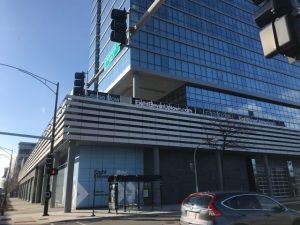
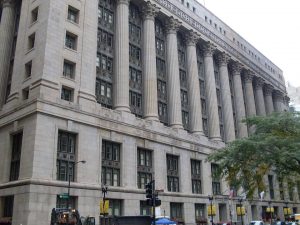
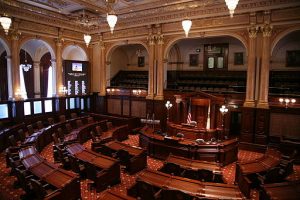


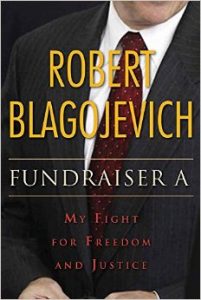

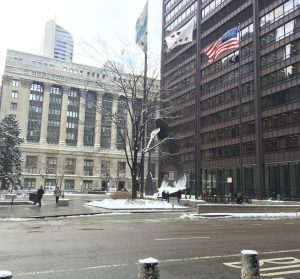
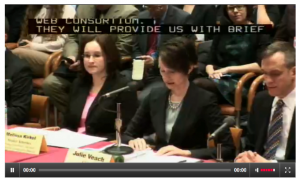
Be First to Comment